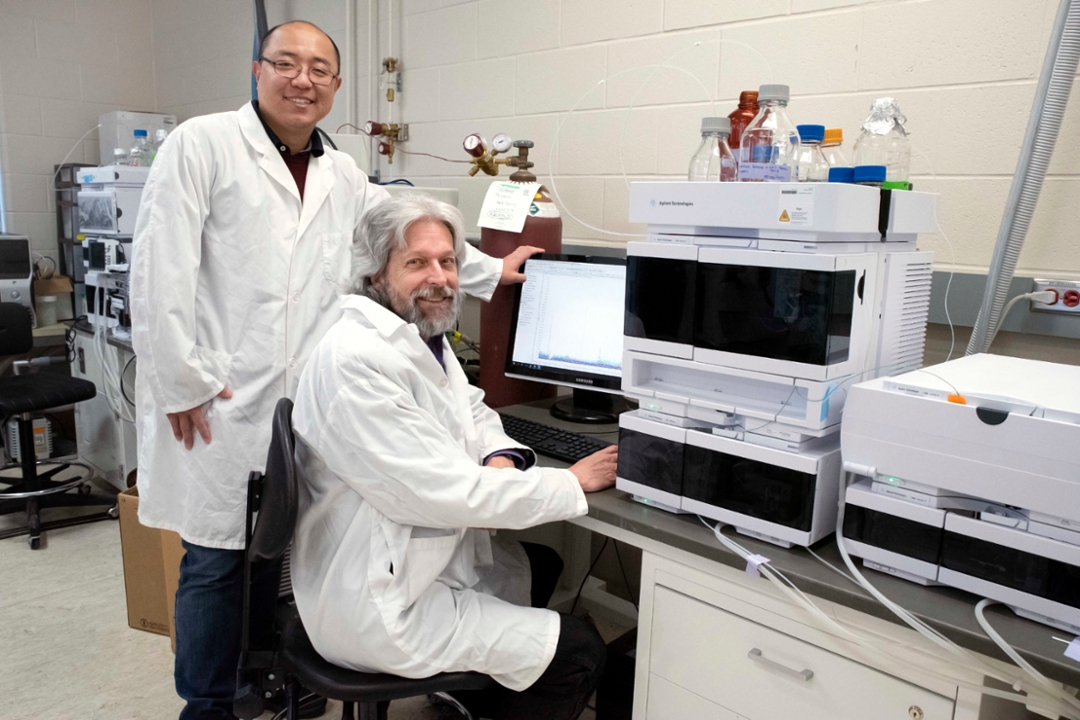
USask researchers develop fast, accurate test to identify toxins in cereal crops
SASKATOON – Researchers at the University of Saskatchewan (USask) Crop Development Centre (CDC) have developed a fast and accurate method for identifying and quantifying toxins in fusarium-infected cereal grain, an innovation that could reduce toxins that are harmful to both animals and humans.
By USask Research Profile and ImpactFusarium head blight (FHB), a fungal disease affecting kernel development, causes millions of dollars in annual losses in Canadian cereal crops such as barley, wheat and oats.
With warming weather patterns and more intensive farming practices, fusarium has been spreading across the Prairie provinces. The infected grain is often both lower in quality and kernel weight, and may be unsuitable for human and animal consumption.
That’s because the fusarium infection process produces mycotoxins such as deoxynivalenol (DON), which in severe cases can reduce the market value of a crop to zero. Animals consuming feed containing high levels of DON may have reduced growth, as well as reduced fertility and reduced immune response. In worst cases, the toxins can lead to death of the animal. There can also be long-term impacts on human health from consuming mycotoxins in food.
As mycotoxins such as DON are not destroyed during processing such as milling, baking or malting, testing infected feed grain for the concentration of DON is becoming critically important. To limit mycotoxins in food and feed, regulations specify maximum allowable concentrations, and if these limits are exceeded, products cannot be sold.
Breeding for low DON concentration in cereal crops is an important control measure for the disease, said CDC research officer Lipu Wang.
“The problem has been that crop breeders and researchers have lacked a way to measure DON that is both quick and accurate,” said Wang.
Wang and USask researcher Randy Kutcher of the CDC’s cereal and flax pathology program have come up with a new way to test for DON that involves a one-step extraction of the mycotoxins using the chemical solvent acetonitrile, followed by direct injection of the toxins into a mass spectrometer to identify and quantify them. This method eliminates the lengthy process of separating the compounds and lowers the cost, while providing high sensitivity and accuracy compared to other methods.
“Analysis that previously took 20 minutes per sample can now be done in less than two minutes, which is very important when testing thousands of samples,” Wang said. “This new method offers breeders a much more efficient way to select wheat or barley lines that accumulate less DON.”
Eventual use of the new method by grain companies has the potential to enhance quality assurance for the grain industry in domestic and export markets, said Kutcher.
“Our customers want no contaminants—no toxins—in our grain,” said Kutcher. “It may also help in deciding whether grain should be processed as food or animal feed.”
The research team is now using the new mycotoxin test in their plant pathology program at the CDC, using the mass spectrometer in the College of Pharmacy and Nutrition. They are seeking to expand the diagnostic testing with research collaborators, interested breeders, and clients.
The team has also developed a way to identify and quantify other toxins, providing a powerful tool to detect new types of mycotoxins in newly developed cereal grain varieties.
The project is supported by the Saskatchewan Agriculture Development Fund and the Saskatchewan Wheat Development Commission.
–30–
For more information, contact:
Victoria Dinh
Communications and Media Relations Co-ordinator
University of Saskatchewan
306-966-5487
victoria.dinh@usask.ca
Lipu Wang
Research Officer
USask Crop Development Centre
306-966-8586
306-260-9186 (cell)
liw791@mail.usask.ca

